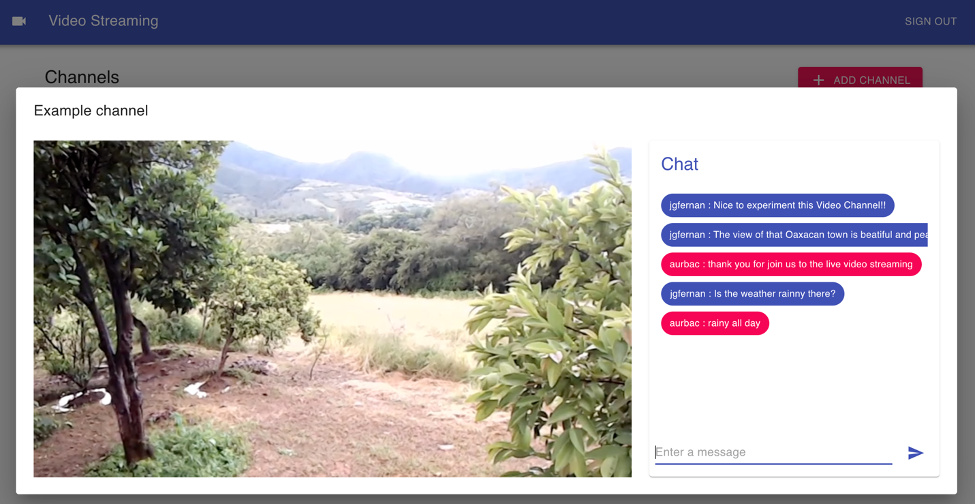AWS for M&E Blog
Tag: AWS Elemental MediaStore How-To
How-to: Build a video-chat application for live streams using AWS Amplify and AWS Media Services
In this post, we are going to build a video-chat web application. For front-end hosting and backend resources, we’ll use AWS services like AWS Amplify, a set of tools and services that help front-end web and mobile developers build scalable full stack applications. And by using AWS Cloud Development Kit (AWS CDK), an open-source software […]
How to live stream pre-recorded video using AWS Elemental MediaLive
In this blog post I walk you through how to live stream pre-recorded videos using AWS Elemental MediaLive. This use case is ideal for customers who want to retain control of their messaging by pre-recording their videos and reach a larger audience using multiple social channels like Twitch, YouTube, and Facebook. In 2020, due to […]
How to: Delivering high-profile live video streams using AWS Media Services
Introduction In a previous Media Blog series, we provided several examples of sophisticated workflows using AWS Media Services. In this post, I demonstrate a workflow that delivers a basic HLS livestream with resiliency for high-visibility events. Workflow overview This workflow uses multiple levels of redundancy to eliminate several single points of failure that might take […]
How to: Dolby Atmos Live streaming using AWS Elemental and AWS Media Services
It’s the right time to get immersive. Dolby Atmos was first released in 2012 with the animated movie “Brave”. Since then, more than 950 movies, TV shows and Live events have been created using Dolby Atmos. Dolby Atmos audio is now distributed globally via broadcasts such as: SkyUK, Xfinity (Comcast); BT for top tier sporting […]
Build a reliable HLS live channel with AWS Elemental MediaStore
For resilient live streams, you usually have two encoders, which creates two master manifests. However, that on its own is not enough. If one of the encoders suffers a failure – let’s say encoder 1 – the manifests for encoder 1 becomes stale (no longer updated), while encoder 2’s manifests and A/V segments continue to […]
Getting started with ultra-low latency using AWS Elemental Live – Part 2
The AWS Elemental Live encoder version 2.19.0 now supports chunk delivery to AWS Elemental MediaStore enabling a stable user experience of 3-4 seconds glass-to-glass latency using standard HLS/DASH packaged content and delivered through traditional CDNs. This blog post, the final of a two-part series, provides a step-by-step guide to building an ultra-low latency (ULL) workflow […]
Getting started with ultra-low latency using AWS Elemental Live — Part 1
AWS Elemental Live (version 2.19.0) now supports chunk delivery to AWS Elemental MediaStore, enabling a stable stream with 3-4 seconds end-to-end latency using standard HLS/DASH packaged content and delivered through traditional CDN’s. This allows customers to deliver low-latency video from on-premises to the cloud with great image quality and DRM integration, and take advantage of the […]
Create a live streaming CloudWatch dashboard using AWS Elemental MediaStore access logs
Customers build live streaming video workflows using AWS Elemental MediaStore as a high performant live video origin in the cloud. But when it comes to monitoring live video streams, customers can find it a little challenging to create an Amazon CloudWatch dashboard using AWS Elemental MediaStore access logs. By default, AWS Elemental MediaStore does not […]
AWS Elemental MediaStore: Ingest acceleration
Introduction Oceans and borders can’t stop video providers from delivering their viewers amazing content from all over the planet. However, distance can create challenges when attempting to publish content that is ingested from a region with a limited AWS footprint. To facilitate the use of AWS Elemental Media Services from regions of the globe where […]
Monitor performance with AWS Elemental MediaStore HTTP access logs
AWS Elemental MediaStore is an AWS storage service optimized for media. It gives you the performance, consistency, and low latency required to deliver live streaming video content. To monitor ingest and egress for MediaStore, pipeline access logs provide detailed records for requests that are made for any object stored in a MediaStore container. This information […]









